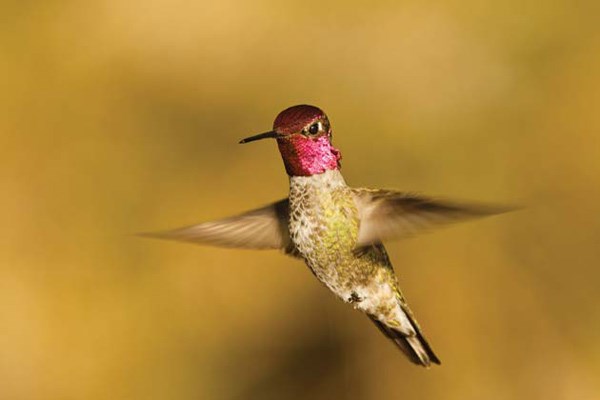A Californian hummingbird is settling down in Burnaby, likely a reflection of climate change, according to a local birdwatcher.
"This is an example of a bird that's increasing its range but also probably (in response) to climate warming," said George Clulow, local organizer for the annual Christmas Bird Count. "The winters are warm, and it's able to survive."
The species in question is Anna's hummingbird, a fuschia-throated fowl not much larger than a ping-pong ball. According to Clulow, the species has been moving north from California for about three decades. During the past 15 years, they have been found in the Vancouver area but only close to the ocean.
"Now, they really seem to be moving away from that narrow coastal strip into areas like Burnaby," he said.
Clulow's comments came following the annual Christmas Bird Count. Every winter, volunteers conduct a census of winter birds, counting and cataloguing species they spot on a designated day. Citizen scientists across the Americas participate, and conservation groups and the National Audubon Society use the results. Clulow, a retired teacher, organizes a team for the Burnaby Lake and Deer Lake area and has been involved in the count for more than two decades. He's been an avid birder for more than 40 years.
Anna's hummingbird was first spotted in Burnaby in 2008. This year's count noted only two, but the bird seems to be firmly established in Burnaby, Clulow said.
"The two we recorded this year were not found at garden feeders but away from houses in Deer Lake Park, which suggests they are now becoming welladapted to winter conditions in Burnaby," he said.
On average, there are 58 species spotted in the Burnaby Lake and Deer Lake area, but this year's count noted 64.
Numbers for the area's Northwestern crow are down. Burnaby is home to what's very likely the province's largest crow roost. Every night, thousands of Lower Mainland crows cross the skies to sleep, huddled together in the trees along Still Creek in the Willingdon Business Park area. Last year's bird count listed 23,000 crows, but this year, Clulow only counted an estimated 18,000. But the drop reflected how hard they were to count, he said.
"They proved a little difficult to count this year because of the direction they took flying into the roost," he said.
The only new species added to the count was a single horned grebe found at Burnaby Lake. Some common species were noticeably absent this year: the pileated woodpecker, Cooper's hawk and the house sparrow.
www.twitter.com/JenniferMoreau



